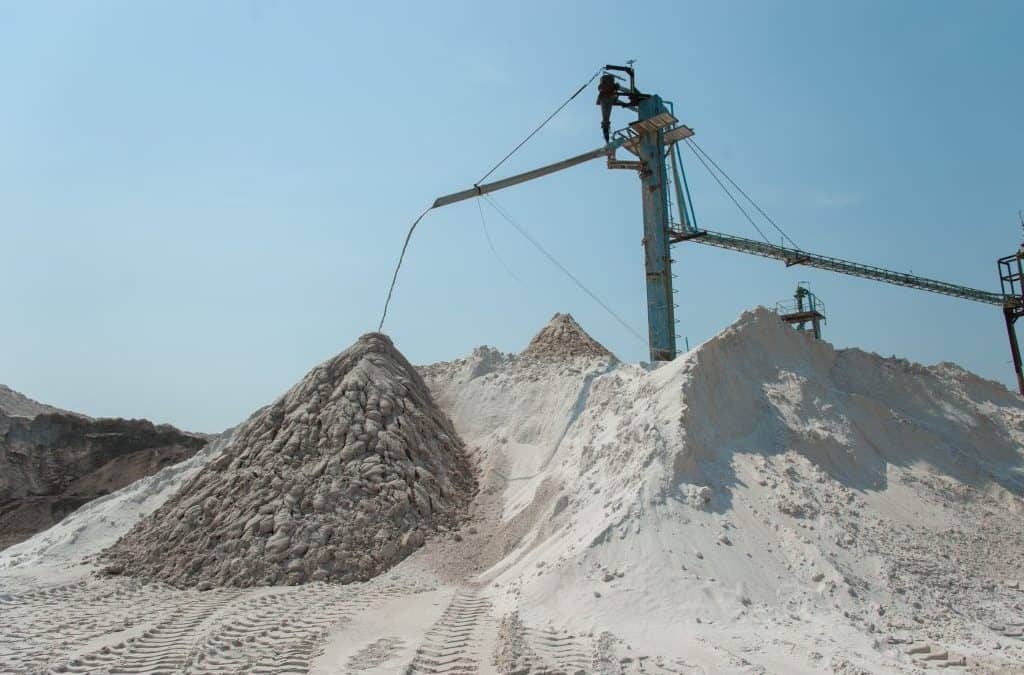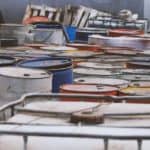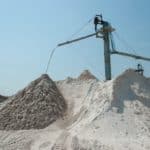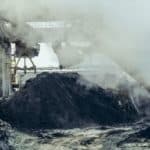The time is almost here. On June 23, 2018, OSHA will begin enforcing its silica rule (1910.1053 – Respirable crystalline silica). Crystalline silica is a very abundant material found throughout the earth’s crust. According to OSHA, there are approximately 2.3 million people in the United States that are exposed to silica at work. There are several industries that have been trying to reduce their silica concentrations for years, well before this rule was announced. Foundries, fracking sites, sand mines, stone counter top manufacturers, and others use prodigious amounts of material laden with silica. These industries are well aware of the upcoming rule, and the impact it poses to their operations.
A Quick Aside – The “Respirable” in Respirable Crystalline Silica Matters!
It is important to note that the silica rule applies to respirable forms of the material. The sand in your child’s sandbox is likely nearly 100% crystalline silica, but consists mainly of very large particles (80 to 500 microns), that cannot reach the lungs. These are boulders in comparison to the size of particles that constitute respirable dust (4 microns and less).

Respirable particles don’t really behave like particles at all. Whereas a 100 micron particle would fall a foot in a second, a 1 micron particle could take an hour to fall the same distance. Particles under one micron can remain airborne for multiple hours. A suspension of respirable particles is better thought to behave similar to a gas, remaining airborne for long periods of time while diffusing into the surrounding air.
There are other processes and activities that can potentially produce concentrations of respirable crystalline silica that are not as obvious. To ensure a protected workforce, and compliance with the upcoming regulation, I would like to touch on a few of the surprising sources I have encountered in my travels. First off, the silica rule…
The Silica Rule – A Quick Discussion
There is a lot to unpack in the nearly 4,000 words contained within the rule. There are requirements to training, medical surveillance, regulated areas, periodic monitoring, engineering controls, respiratory protection, etc.. For purposes of this article, I’m going to assume the employer has not determined if they are subject to the rule. As such, I will highlight a few particular excerpts:
- Action level means a concentration of airborne respirable crystalline silica of 25 μg/m3, calculated as an 8-hour TWA
- 1910.1053(a)(2) This section does not apply where the employer has objective data demonstrating that employee exposure to respirable crystalline silica will remain below 25 micrograms per cubic meter of air (25 μg/m3) as an 8-hour time-weighted average (TWA) under any foreseeable conditions.
- 1910.1053(c) Permissible exposure limit (PEL). The employer shall ensure that no employee is exposed to an airborne concentration of respirable crystalline silica in excess of 50 μg/m3, calculated as an 8-hour TWA.
- 1910.1053(d)(1)General. The employer shall assess the exposure of each employee who is or may reasonably be expected to be exposed to respirable crystalline silica at or above the action level in accordance with either the performance option in paragraph (d)(2) or the scheduled monitoring option in paragraph (d)(3) of this section.
So to be exempted from the rule, “employers must have objective data demonstrating employee exposure to respirable crystalline silica associated with a particular product or material or a specific process, task, or activity will remain below the Action Level.” The rule also states that “employers need to assess the exposure of each employee who may be exposed to respirable crystalline silica at or above the action level.” It is very possible that employers may be touched by this rule without even knowing it. As stated in the introduction, silica is a very abundant material, and as such it is used in many products.
A List of 10 Materials that Potentially can be Associated with Crystalline Silica
Below are ten examples of industrial products that may warrant an evaluation of respirable silica exposures:
- Paint – Silica can be found in certain paints. Often it is inserted to provide grip for textured non-slip paints, and it can also be used as a binder material. There are two exposure concerns for this material. The first is during application, when an employee is often spraying atomized paint onto part surfaces. The second (and in my opinion a more significant hazard) involves sanding and grinding of previously painted surfaces. Often the hazard remains hidden during these activities, and it is not easy too ascertain what paint contains silica and what does not.
- Welding Flux – Solid welding fluxes can contain significant concentrations of crystalline silica (a product I encountered contained 6-12% quartz, a form of silica). Exposure can occur during active welding, when the residual flux is removed after welding is completed, and during subsequent grinding/finishing activities.
- Silica-Substitute Blast Media – The old means of sand blasting was using regular old silica sand, which obviously poses a significant exposure hazard. In response to safety concerns, the blast media industry has developed a number of alternative media (slag, metal oxide, glass, organic) to use. Undoubtedly these materials are a better option than pure sand. However, one should be sure that a respirable silica exposure risk does not remain. Sometimes materials will be listed as either having “No Free Silica” or “Non-Respirable Silica”. Beware of this, as blasting moves material at a high rate of speed at a hard object, which will fracture it, potentially creating smaller respirable particles from your non-respirable product. Most slag based products are listed to contain amorphous (non-crystalline) silica with low %crystalline silica. These products still can be a concern. I’ve measured walk-in blast booths where the employee was exposed to very significant respirable dust concentrations. A 1% cystalline silica-containing product producing an airborne respirable dust concentration of 2.5 mg/m3 (very possible in blasting applications) would likely result in concentrations near the Action Level.
- Oil Absorbents – These materials are often bentonite/limestone, which can contain a percentage of crystalline silica. The SDSs for some commonly available kitty litters (often used as a cost effective absorbent) are listed to contain crystalline silica in the range of 5-9%. There are many oil absorbents that are advertised as silica-free. Many can also be composed of diatomaceous earth (also containing silica). Small sporadic use likely wouldn’t be much of a concern, but large quantities that are further degraded by foot traffic and forklift/vehicle passage, followed by dry sweeping or compressed air clean-up (activities prohibited by the standard if they contribute to worker exposure) could definitely result in higher exposures. It should be noted that the standard exempts exposures from sorptive clay processing, but industrial use of such products does not seem to be exempted.
- Waxes – Some of the waxes utilized to manufacture patterns for investment casting contain a quantity of quartz. The wax I have encountered (a tan water soluble flake) was shown to contain <2.5% quartz (a form of silica). The primary concern would involve the addition of the dry wax (often in flake or pellet form) into the process. Depending on the quantities in use and the way it is handled, significant airborne dust could be generated.
- Colloidal Silica Binders – The binders used in investment casting are not usually crystalline silica, but amorphous silica. However, when this material is heated (as would be the case when molten metal is introduced), there can be some conversion to crystalline silica, notably cristobalite (a form of silica). Now the residual shell poses a source, which can pose a hazard during knockoff and finishing activities. Some silica binders will advertise having a chemistry which “decreases the rate of conversion to crystalline silica”.
This brings up an interesting point about the conversion of silica from less-hazardous to more-hazardous forms through the application of heat. I’m not aware of other examples in industry where this occurs, but it is a very good point to keep in mind when reviewing your own particular operations. - Filtration Aids – These materials are often utilized as filter materials in wastewater treatment and food processing. Common materials include diatomaceous earth (up to 5% quartz/cristobalite, both forms of silica) and perlite (up to 2% quartz). Depending on the application, employees can be charged with loading hundreds of pounds of this material into vessels or tanks. Without proper ventilation or other controls, there is definite potential for exposure to airborne dusts.
- Natural Graphite – Quartz (Crystalline Silica) is a natural impurity found within graphite. In reviewing available SDSs, the content is typically listed from 0-5% of the product.
- Talc – This commonly encountered material can contain quantities of crystalline silica quartz, though most varieties are advertised as silica-free. Still, an SDS review of talc products shows that quartz is often a listed material. The concentrations are typically low, 1% or below, but in high dust areas, there could be exposure concerns. Personally, I have switched away from using the talc-type powders (in favor of corn starch or zinc stearate based products) in my borozin powder gun when performing ventilation checks.
- Potatoes – These vegetables are typically grown in sandy soils. In locations where there is significant handling of large quantities of potatoes (such as in the receiving area of a food plant) it is possible for concentrations to exceed the Action Limit and even approach the PEL. The harvesting of potatoes is also known to create potential worker exposures (as detailed in the following link)
So there you have it. Certainly this list is not exhaustive, it just shows some of the materials that I have encountered that have demanded more attention with regards to crystalline silica.
Conclusion
The takeaways from this article should be:
- Silica is a prevalent material, and is found in many commonly used products in industry.
- Employers should review the products they have on-site for silica content. Similar materials can have drastically different %silica contents.
- Just because you have a silica-containing product on your site does not necessarily mean you are subject to the all the requirements of the rule. Remember, the silica needs to be both in a respirable form (less than 4 microns) and in airborne concentrations exceeding the Action Level/PEL. Beach sand can be nearly 100% crystalline silica and doesn’t pose a hazard, as the particles are too large to be respired.
- You do need to demonstrate that your workers’ exposures will be below the Action Level. This can be accomplished either through objective data (industry-specific data, calculations, etc.) or air-monitoring results. It must be defensible data!
- As always the classic toxicology saying, “the dose makes the poison” applies. Using a scoop of kitty litter once a week to clean up a spill will definitely not result in concerning airborne concentrations (this can be easily proved through calculation). A full-time sanding process on painted parts where silica is involved presents much more uncertainty.
If your boss, an employee, or OSHA walked into your office tomorrow and asked for proof that your silica-containing product is safe to use, could you provide it?
Protecting your worker’s health is critically important, for a multitude of reasons. When products that contain hazardous ingredients are handled unawares, then potentially debilitating personal exposures can occur. Accurately quantifying your employee’s exposures allows you to select the proper PPE, to implement the proper engineering/administrative controls, and to review potential substitute alternative products.






